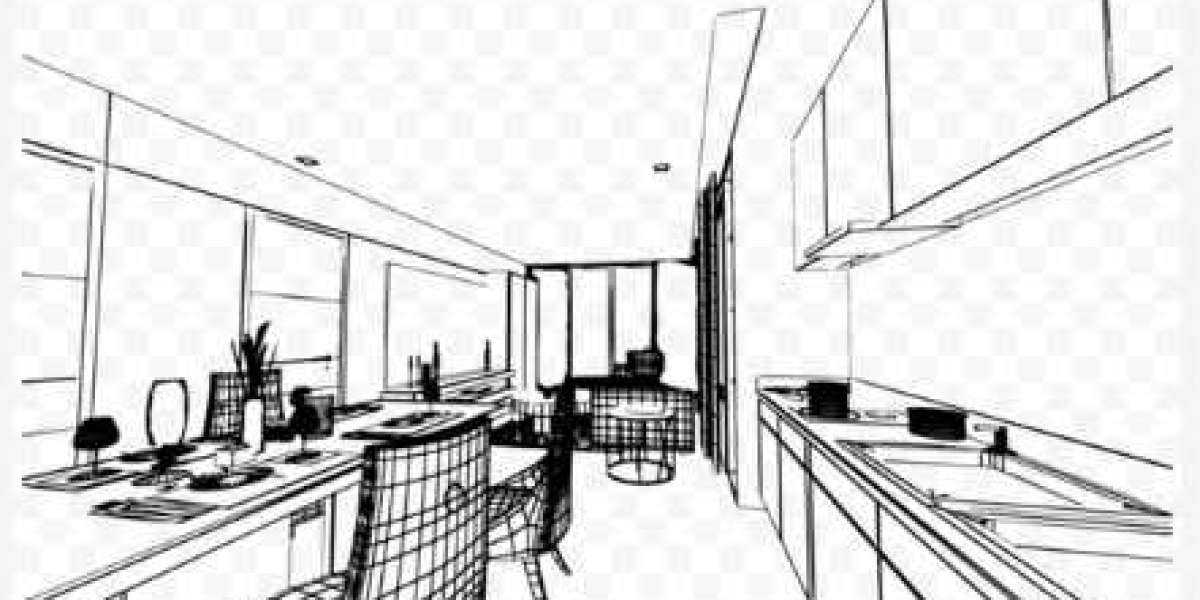Obtaining a patent is essential for inventors and businesses looking to protect their intellectual property. Alongside a well-drafted patent application, patent drawings play a crucial role in illustrating and supporting the invention. This article will explore provisional patent drawings’ significance, purpose, and associated costs.
What are Provisional Patent Drawings?
Provisional patent drawings are visual representations that accompany a provisional patent application. They play a crucial role in illustrating and supporting the invention described in the application. These drawings visually communicate the invention’s structure, design, and unique features.
The purpose of provisional patent drawings is to enhance the understanding of the invention for both the patent examiner and anyone reviewing the application. They provide a clear and detailed depiction of the invention, making it easier for others to grasp its concept and functionality. By supplementing the written description with visual representations, inventors can effectively convey their ideas and ensure a comprehensive understanding of their invention.
Provisional patent drawings are not just simple sketches but should be carefully crafted to represent the invention accurately. They should provide sufficient detail and clarity to enable others in the field to replicate or understand the invention based on the drawings alone.
These drawings are particularly important for inventions that involve complex mechanisms, intricate designs, or unique configurations. They help highlight the novel aspects of the invention, showcasing its innovative features and technical details. Provisional patent drawings can play a crucial role in strengthening the claims made in the patent application by providing visual evidence of the invention’s novelty and non-obviousness.
Furthermore, provisional patent drawings are a foundation for subsequent non-provisional patent applications. When an inventor decides to convert their provisional application into a non-provisional one, they can build upon the drawings in the provisional application. This allows for a seamless transition and ensures that the non-provisional application includes comprehensive and accurate illustrations of the invention.
It is important to note that provisional patent drawings must comply with the guidelines set by the respective patent office. These guidelines specify requirements regarding the drawings’ size, margins, resolution, numbering, and font usage. Adhering to these guidelines is crucial to avoid delays or rejections in the patent application process.
While inventors can create their provisional patent drawings, hiring a professional patent illustrator or utilizing a patent drawing service is often advisable. Professionals possess the expertise to create drawings that meet the patent office standards and ensure accuracy and professionalism in the visual representation of the invention.
Importance of Provisional Patent Drawings
Provisional patent drawings hold significant importance in the patent application process. They serve multiple purposes and offer various benefits for inventors seeking to protect their intellectual property. Here are some key reasons why provisional patent drawings are important:
- Enhanced Understanding: Provisional patent drawings provide a visual representation of the invention, making it easier for others to understand its structure, function, and unique features. By supplementing the written description with visual illustrations, inventors can convey their ideas more effectively, reducing the possibility of misinterpretation or misunderstanding.
- Clear Communication: A well-drafted drawing can often convey complex technical information more clearly and concisely than a written description alone. By using visual aids, inventors can bridge language barriers and communicate their inventions to a wider audience, including patent examiners, potential investors, and licensing partners.
- Strengthened Patent Claims: High-quality provisional patent drawings can strengthen the claims made in the patent application. They provide visual evidence of the invention’s novelty, non-obviousness, and unique aspects. Drawings that depict the invention’s technical details and innovative features can support the arguments for patentability, enhancing the chances of obtaining a granted patent.
- Support for Patent Specification: Provisional patent drawings complement the written description of the invention in the patent specification. They help to provide a more comprehensive and detailed understanding of the invention’s physical structure, configuration, and operational aspects. Including drawings can enhance the overall quality and clarity of the patent application, making it easier for examiners and others to evaluate its merits.
- Future Patent Applications: Provisional patent drawings are a foundation for subsequent non-provisional patent applications. When an inventor decides to convert their provisional application into a non-provisional one, the drawings included in the provisional filing can be expanded upon and refined. This helps create a more comprehensive and detailed patent application, strengthening the overall disclosure of the invention.
- Protection against Disclosure: Provisional patent applications provide a “patent pending” status to the invention, offering protection while the inventor develops and refines the invention further. Including drawings in the provisional application helps establish an early priority date and preserves the inventor’s rights, preventing others from filing similar inventions during the priority period.
- Licensing and Marketing: Provisional patent drawings can also be used for marketing and licensing purposes. They can visually represent the invention’s unique selling points, making it easier for inventors to showcase their innovation to potential investors, manufacturers, or licensees. Drawings can be valuable assets in negotiations and aid in effectively conveying the invention’s commercial potential.
Considerations for Provisional Patent Drawings
When creating provisional patent drawings, there are several important considerations to remember. These considerations ensure that the drawings support your invention and comply with patent office guidelines. Here are some key factors to consider:
- Clarity and Accuracy: Provisional patent drawings should be clear, accurate, and visually appealing. They should accurately depict the invention’s structure, components, and functionality. Ensure that the drawings provide sufficient detail to enable a person skilled in the field to understand and replicate the invention based on the illustrations alone. Ambiguities or inaccuracies in the drawings may lead to confusion or rejection during the patent application process.
- Compliance with Patent Office Guidelines: Each patent office has specific guidelines regarding the format, size, margins, numbering, and other requirements for patent drawings. It is crucial to familiarize yourself with these guidelines and ensure your drawings adhere to them. Failure to comply with the guidelines may result in the drawings being deemed non-compliant, leading to delays or rejection of the patent application. Pay attention to file formats, image resolution, and line thickness specifications to meet the patent office’s requirements.
- Multiple Views: In many cases, it is necessary to provide multiple views of the invention to illustrate its structure and functionality fully. Common views include front, back, top, side, cross-sectional, and exploded views. Including multiple views can provide a comprehensive understanding of the invention, especially for complex or multi-component inventions. Consider the angles and perspectives that best showcase the unique aspects of your invention and ensure that each view complements the others to provide a complete picture.
- Professionalism: While inventors can create their provisional patent drawings, seeking professional assistance from a patent illustrator or patent drawing service is often beneficial. Professionals have expertise in creating high-quality, compliant drawings that meet the patent office guidelines. They can ensure that the drawings accurately represent your invention, enhancing their effectiveness and professionalism.
- Detailed Labeling: Labeling the various components and features within the drawings is crucial. Each element should be clearly labeled and referenced in the written description of the invention. Consistent and accurate labeling helps the examiner, and others understand the different parts of the invention and how they interact. Use reference numerals, arrows, and other conventions to indicate the relationships and connections between the elements.
- Neutrality and Non-Provisionality: It is important to note that provisional patent drawings should not include any information that reveals or limits the invention beyond what is disclosed in the provisional application. The drawings should be neutral and avoid any language, text, or markings that imply the inclusion of specific features or limitations not explicitly disclosed in the application.
- Collaboration with Patent Attorney: Consider collaborating with a patent attorney or agent throughout creating provisional patent drawings. These professionals can provide guidance, review the drawings for compliance and accuracy, and ensure that the drawings effectively support your invention and patent application.
Cost of Provisional Patent Drawings
The cost of provisional patent drawings can vary depending on several factors. Here are some key considerations that can influence the cost:
- The complexity of the Invention: The complexity of your invention plays a significant role in determining the cost of the drawings. Inventions with intricate designs, multiple components, or complex mechanisms may require more time and effort to represent the drawings accurately. The more intricate and detailed the drawings need to be, the higher the cost may be.
- Number of Views: Provisional patent drawings often consist of multiple views, such as front, back, top, side, cross-sectional, or exploded views. The more views required to illustrate your invention fully, the more time and effort will be involved in creating the drawings, which can impact the cost.
- DIY vs. Professional Services: You can create the provisional patent drawings yourself or hire professional services to assist you. Creating the drawings yourself can save costs, but it requires the necessary skills and knowledge to meet the patent office guidelines and create accurate, high-quality drawings. Hiring a professional patent illustrator or utilizing a patent drawing service ensures expertise and compliance with guidelines, but it comes with associated fees.
- Choice of Service Provider: If you hire a professional patent illustrator or use a patent drawing service, the cost can vary depending on the service provider. Different providers may offer different pricing structures depending on factors such as their experience level, reputation, geographic location, or the complexity of the drawings. It is advisable to obtain quotes from multiple service providers to compare costs and services before deciding.
- Revisions and Amendments: Depending on the feedback from a patent attorney or the office, you may need to make revisions or amendments to the provisional patent drawings. This can involve additional time and effort, increasing the overall cost.
Conclusion
In conclusion, provisional patent drawings are important in the patent application process. They play a vital role in enhancing understanding, strengthening patent claims, and providing visual support for the written description of the invention. By investing in high-quality provisional patent drawings, inventors can increase the chances of securing patent protection and effectively communicate the unique aspects of their inventions to patent examiners, potential investors, and licensing partners.
Several factors come into play when considering the cost of provisional patent drawings. The complexity of the invention, the number of views required, and the decision to use professional services all impact the overall cost. It is important to balance the budget with the need for accurate and compliant drawings that effectively represent the invention.
Collaborating with a patent attorney or agent can provide valuable guidance throughout the process, ensuring that the provisional patent drawings meet the requirements of the patent office and effectively support the invention’s disclosure. Obtaining quotes from multiple service providers and comparing costs and services can help make an informed decision about the most suitable option for creating the provisional patent drawings.
Remember, while the cost of provisional patent drawings is a consideration, it is an investment in safeguarding intellectual property and increasing the chances of obtaining valuable patent protection. By prioritizing the quality and accuracy of the drawings, inventors can effectively showcase their inventions and protect their innovations in the competitive landscape of intellectual property.
Read More:
The Cost of Provisional Patent Drawings: Unveiling the Importance of a Patent Draftsman
Understanding the Importance and Cost of Patent Drawings in a Provisional Patent Application
Understanding the Importance and Cost of Patent Drawings: Exploring Patent Drafting Services








